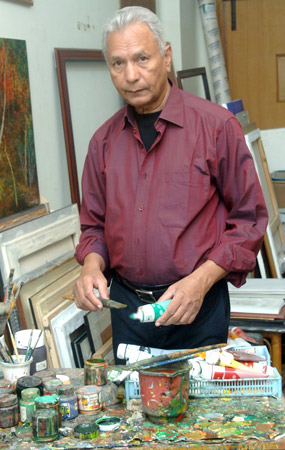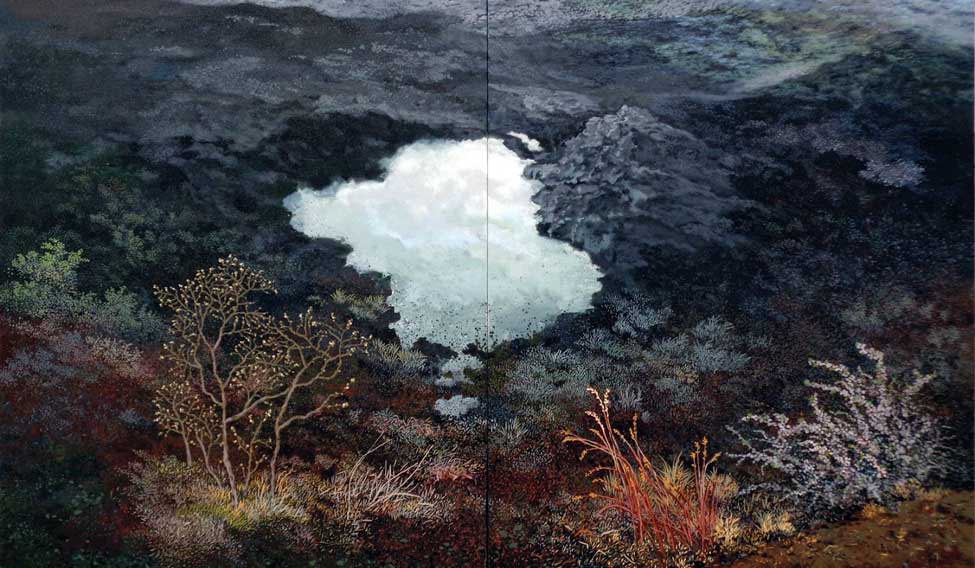With its lush greenery and huge trees, the National Gallery of Modern Art in Bengaluru looks like a massive landscape painting. An ongoing exhibition at the gallery titled 'A Perceptive Eye: Surya Prakas- Retrospective-1960 onwards' showcases 99 works of Surya Prakash.
We caught up with the 77-year-old artist recently for a tete-a tete, where he spoke about how he is unfazed by age, why he avoids human figures in his works and how he manages to remain down to earth despite being so successful.
Q. It seems you haven't slowed down with age. What's your typical day like?
I work like a government servant.
I get up at 5 am. By 9.30, I'm in my studio. I go home for lunch, get back and work till 6 pm.
Q. You never draw human figures. You seem to be gravitated more towards nature. Why do you stay away from human beings and social issues?
Somehow I'm not connected to those elements. This is just me and my work.
Q. Most of the artists I've come across are mavericks. But you look different.
I believe it is important for an artist to learn to manage his mood swings. Else, he will end up wasting his creative energy.
One should learn to make peace with his failures and move on.

Q. Tell us a bit about the different phases you have been through in your artistic journey?
What you see here is just a tiny fraction, maybe one tenth- of my entire body of work.
My early works were quite different. They were also nature centric but not leaves and grass and stuff like that.
I've done a lot of paintings on my city, with its narrow streets. French artists have had a huge influence on me. I used to borrow many elements from Indian artists like Ram Kumar and S.H. Raza too in the initial stages. It takes a hell lot of time to develop your own vision.
Then I moved on to abstracts based on automobile scrap. I would pick up some random elements and add colour to them. A few years later, I did a long series on dead leaves. I enjoyed working on the series on levitating forms in landscapes. They were followed by works on nature and the Venice series.
Q. You paint in layers.
It is a challenge to work on a white canvass. So you cover it in different colours and strokes. I paint one layer at a time and gradually build it from the bottom up. A lot of my works have six to seven layers and some have up to 15 layers. I start with darker colours. It's easier to bring out the element of light, slowly by coming to the lighter colours. They stand out well against the dark.
Q.When you paint the leaves and branches in your landscapes, do you wait for the previous layer to dry?
This medium dries quickly. So you don't need to wait too long.
Q. How do you know when to stop painting?
It is not easy. There are times when I take back works sent for a show, put them on my wall and paint again.
Q. How do you deal with the oil vs acrylic dilemma?
My favourite medium for more than 40 years was oil. I wouldn't touch any other medium then- Even pencil or pen. Then I switched on slowly to acrylic. Meanwhile, I have done some drawings and graphics occasionally.
Q. Does it get harder to work as you get older?
As long as you are fit and your faculties are intact, you can keep on working. I'm quite fit. Hope I can go on painting for another ten years at least, if I'm alive.









